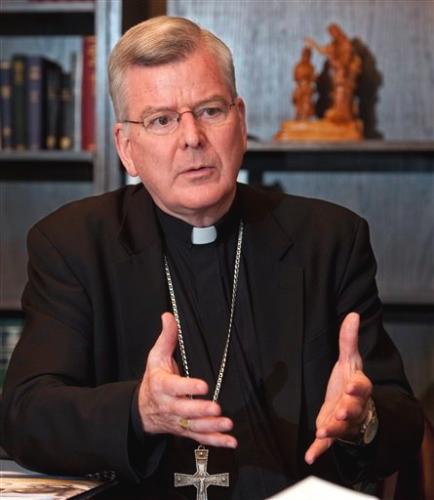Minnesota Archdiocese Accused of Hiding Money Owed to Abuse Survivors
Gazette Review
On Tuesday, lawyers accused the Minnesota Archdiocese of hiding about $1.7 billion dollars in assets, money that is owed to survivors of abuse from Catholic priests after several lawsuits revealed such abuse. This realization comes after recent publicity from the film Spotlight, a documentary drama film about the Boston Globe reporting team that revealed much of the sexual abuse scandal involving male priests and young boys in the church. This lawsuit says that the Minnesota Archdiocese is only reporting $49 million dollars in assets, nowhere close to the $1.7 billion dollars they actually have, which comes from physical assets such as the St. Paul Cathedral, and from other methods such as hiding money away in other companies so as to avoid reporting it to creditors. This is an especially ignominious claim since the release of the Panama Papers, which revealed a number of companies and wealthy individuals around the world who were using a Panamanian law firm to filter money into shell companies so it was not in their own name and was instead tucked away in tax havens. One of the attorneys for several hundred of the victims of sexual abuse by the Catholic priests has said that the Minnesota Archdiocese deliberately conspired to hide the money they actually possessed so as to avoid paying out the money in claims owed to the victims. This recent discovery is actually part of the bankruptcy claim the Minnesota Archdiocese filed in January of 2015 after being inundated by new abuse claims which all required payouts. Minnesota state government had previously forbidden claims based on the statute of limitations but had just opened a three-year window for such claims, which closes Wednesday. In addition to the $1.4 billion the Minnesota Archdiocese has alone, other Catholic groups associated with the Archdiocese such as three Catholic secondary schools in the Twin Cities area, the Catholic Cemeteries, and the Catholic Community Foundation of Minnesota, hold at least $300 million dollars in their own assets. Moreover, the words used to describe the relationship between the Minnesota Archdiocese and the Catholic Cemeteries had been altered on the organization’s website. The Catholic Cemeteries website formerly described itself as “a corporation of the Archdiocese,” but the website was changed to make it seem as if the two were not directly related. There were also pieces of evidence that showed how organizations such as the Catholic Finance Corporation and the Catholic Services Appeal Foundation were previously under the direction of the former Archbishop John Nienstedt, but were disbursed and shifted to the control of other organizations after the three-year exemption of abuse claims (based on the statute of limitations), but before the Minnesota Archdiocese’s claim for bankruptcy this year. The Minnesota Archdiocese will be forced to pay the full amount of claim money owed to victims of sexual abuse. Lawyers are not blaming new Archbishop Bernard Hebda for the current financial situation of the Minnesota Archdiocese, since the changes and disbursing of many of the Archdiocese’s assets out to other companies or other hiding places had been completed under the direction of former Archbishop John Nienstedt, who resigned in June of 2015 after much pressure.
|
.
Any original material on these pages is copyright © BishopAccountability.org 2004. Reproduce freely with attribution.
